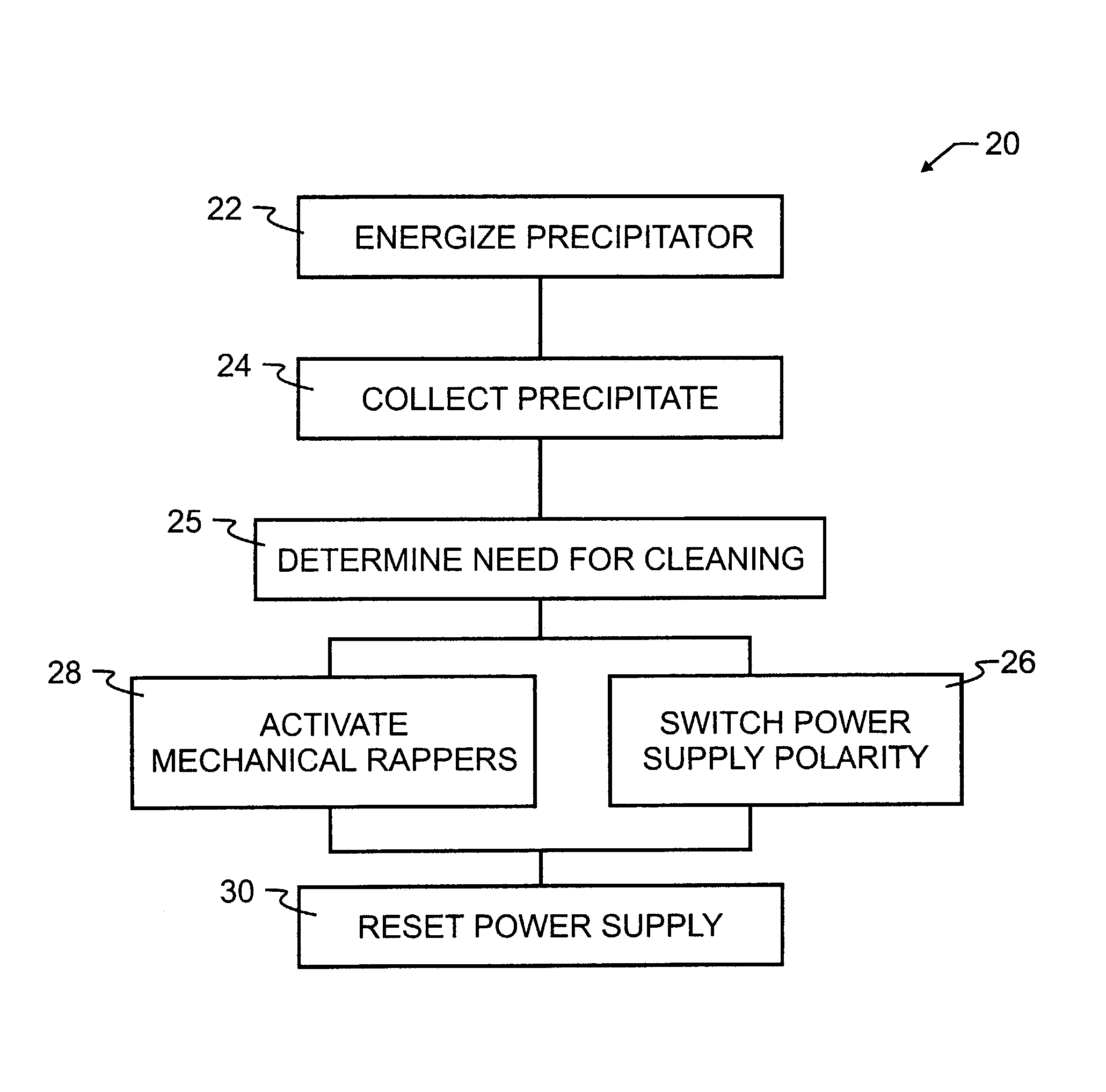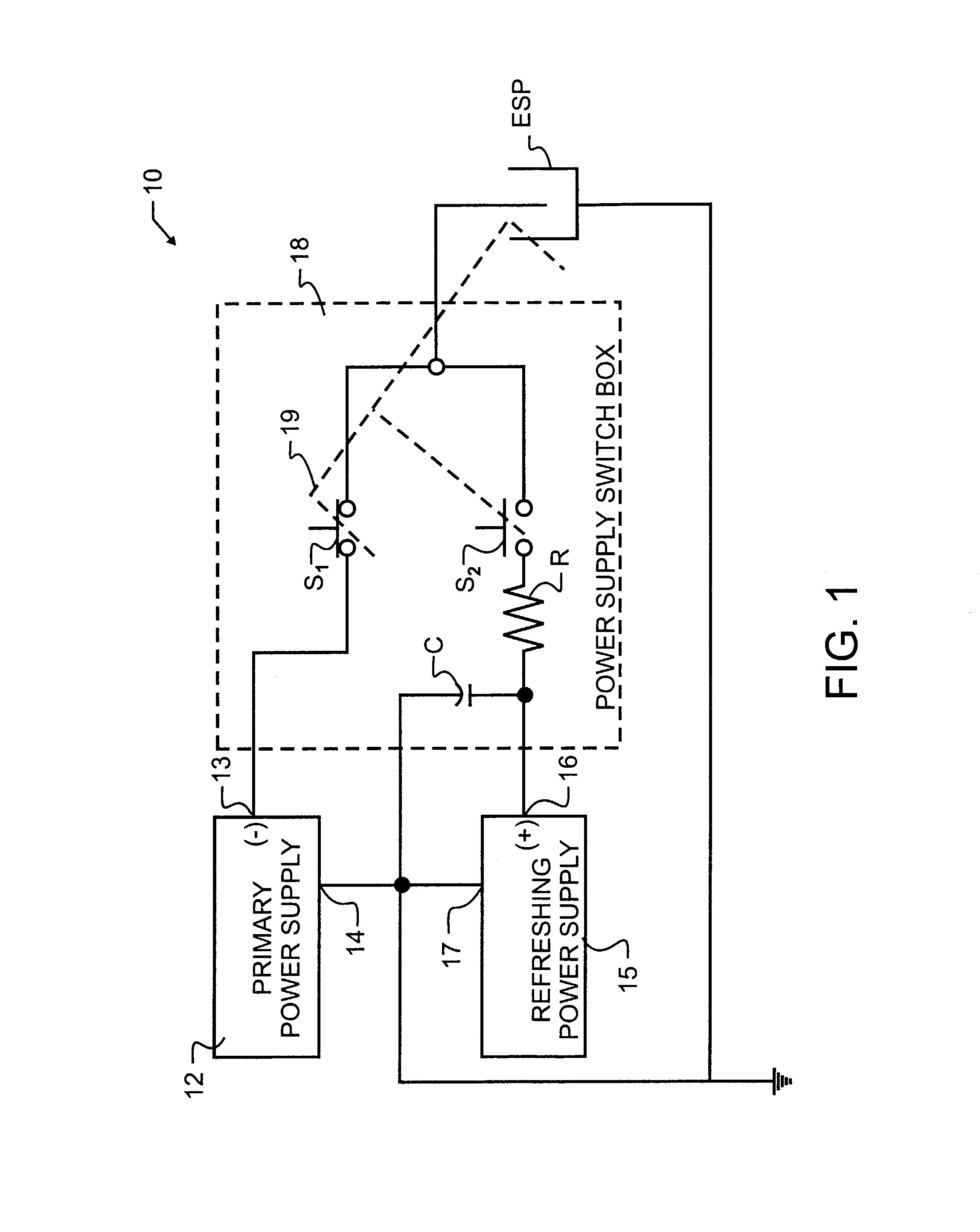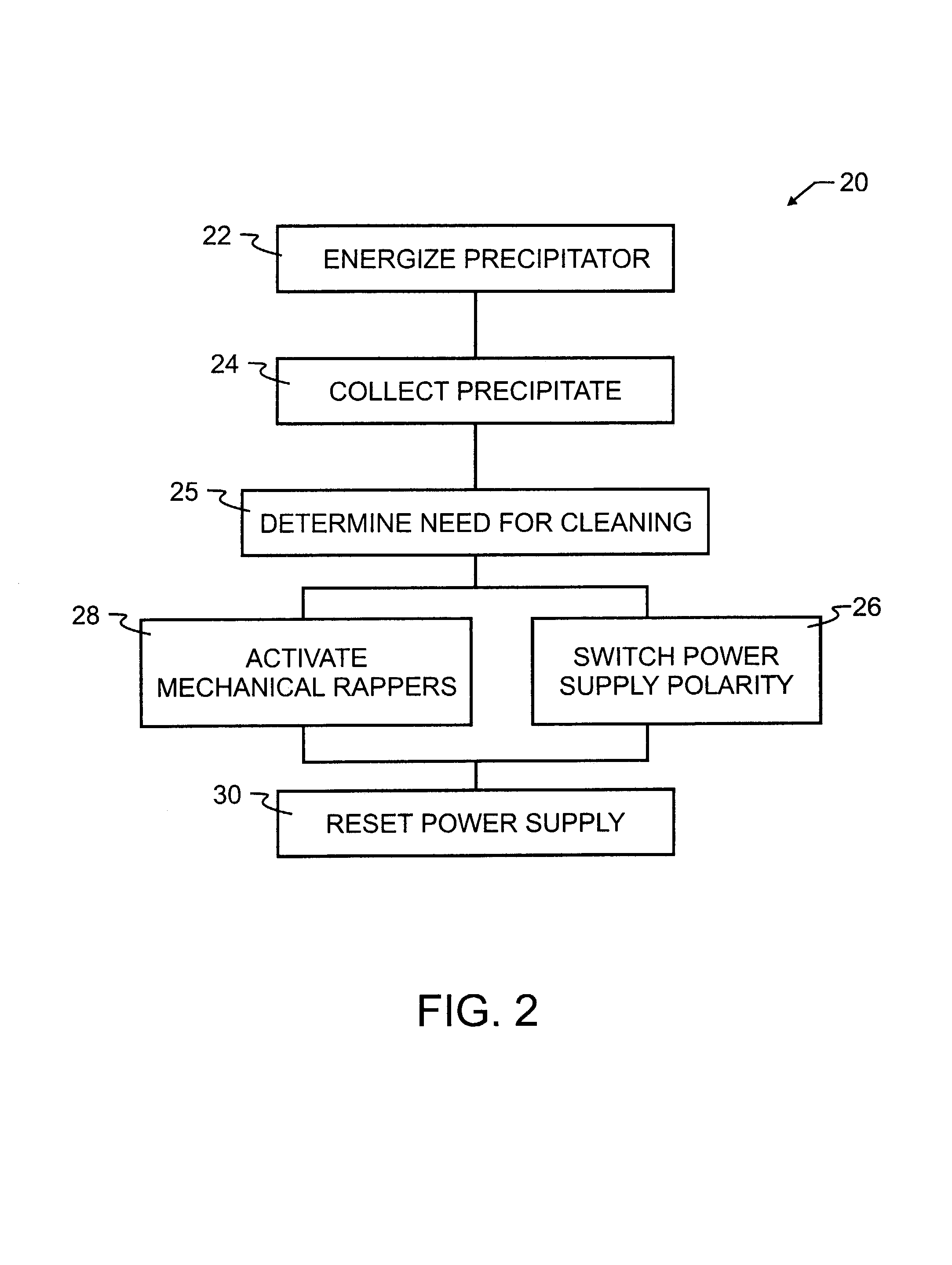Polarity reversing circuit for electrostatic precipitator system
a precipitator and polarity reversing technology, applied in the direction of electrode cleaning, electric supply techniques, transportation and packaging, etc., can solve the problems of limited application, filter clogging, and limited flow through filters, so as to improve the operational effectiveness of electrostatic precipitator systems, enhance existing cleaning techniques, and reduce the time required
- Summary
- Abstract
- Description
- Claims
- Application Information
AI Technical Summary
Benefits of technology
Problems solved by technology
Method used
Image
Examples
Embodiment Construction
[0027]With reference to FIG. 1, a preferred polarity reversing circuit 10 includes a primary power supply 12. Power supply 12 may be of any type known in the prior art, and will typically have a first negative voltage output 13 and a second positive polarity output 14 connected to a circuit common or ground connection. In the precipitation of fly ash from an exhaust stream, using an exemplary prior art electrostatic precipitator ESP, power supply 12 will typically provide an output voltage potential of between 5 kilovolts and 150 kilovolts at an operating current typically within the range of 100 to 2500 milliamperes. The negative polarity output 13 is connected to electrostatic precipitator ESP through switch S1, which, during the standard precipitation function, remains closed.
[0028]Second refreshing power supply 15 is also preferably provided, and may preferably use the same or similar components as found in primary power supply 12. While this selection of similar components is n...
PUM
 Login to View More
Login to View More Abstract
Description
Claims
Application Information
 Login to View More
Login to View More - R&D
- Intellectual Property
- Life Sciences
- Materials
- Tech Scout
- Unparalleled Data Quality
- Higher Quality Content
- 60% Fewer Hallucinations
Browse by: Latest US Patents, China's latest patents, Technical Efficacy Thesaurus, Application Domain, Technology Topic, Popular Technical Reports.
© 2025 PatSnap. All rights reserved.Legal|Privacy policy|Modern Slavery Act Transparency Statement|Sitemap|About US| Contact US: help@patsnap.com



